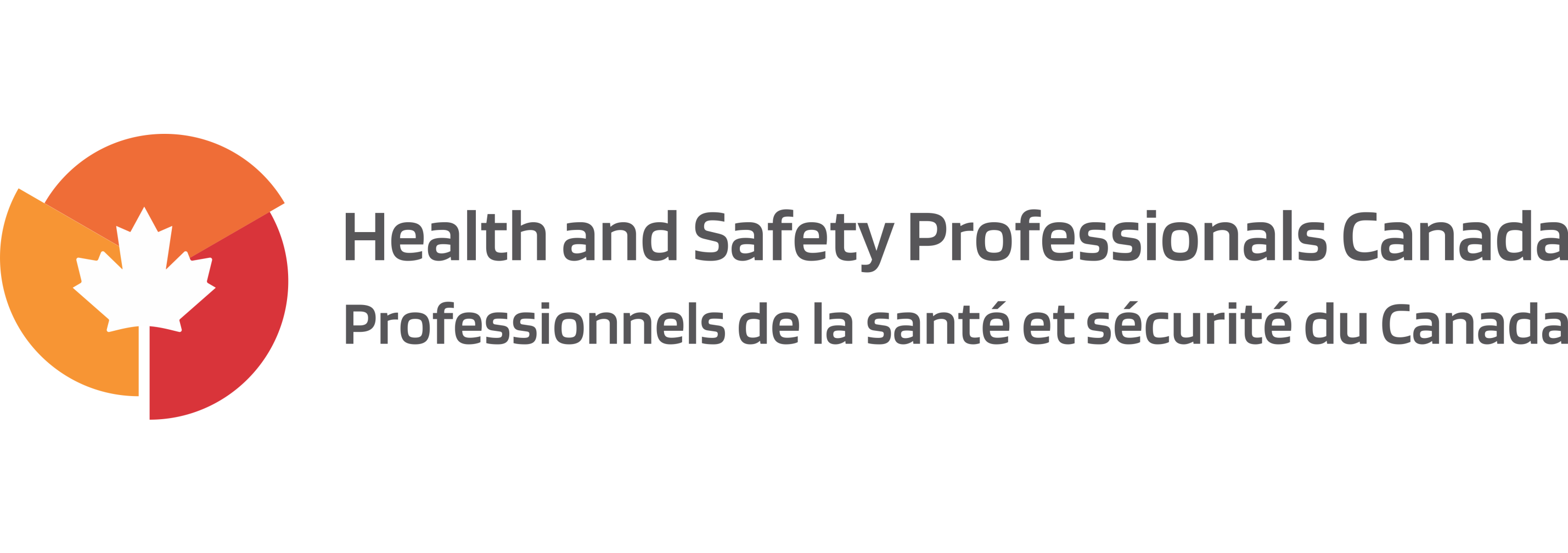HSPC & Minerva Online Health and Safety Courses
Nearly 1,000 Canadians die every year as a result of work-related incidents, and tens of thousands suffer injuries or diseases related to their workplace.
Fortunately, we can learn to manage risks so that everyone can work safely.
Health and Safety Professionals Canada is pleased to partner with Minerva Canada to deliver a series of on-demand, online introductory health and safety courses.

HSPC Member Discount
HSPC members will receive a 20% discount on all courses. You can choose to register for just one course or work toward a Certificate in Health and Safety by completing all four courses.
If you are interested in registering for HSPC/Minerva courses, please email helpdesk@csse.org to receive your exclusive discount code.
Certificate Program Course Descriptions
Click on course titles for more information.
The four courses are designed to ground new health and safety practitioners in the essentials of identifying and managing risks, as well as what is needed to excel and effectively manage health and safety under different circumstances.
- Course 100
The world is full of hazards and risks, and they exist in almost all areas of our lives, including the workplace. Every workplace has its specific hazards and thousands of workers are injured each year. Because of this, it is important for any practitioner to know how to identify hazards and how to effectively control associated risks.
This course provides an overview of health and safety in the workplace, focusing on specific hazards engineers may encounter in their workplaces and ways to manage these hazards.
The course is divided into six different modules that can be completed in any order.
- The Introduction to Health and Safety module discusses the importance of safe workplace practices, health and safety legislation, and the role of employers and employees in ensuring workplace safety.
- In the Hazard and Risk Controls module, we explore the relationship between hazard and risk, and look at the controls we can use to reduce the level of risk in the workplace.
- In the Electrical Hazards and Controls module, we delve into the dangers of electricity, electrical hazards, and controls for managing these hazards.
- In the Fire Hazards and Controls module, we look at fire hazards, flammability parameters, and controls that target each element of the fire triangle.
- The Height Hazards and Controls module discusses the hazards of working at heights and ways to ensure workers’ safety in those situations.
- In the Lab Hazards and Controls module, we review some safety incidents that have occurred in laboratories, the hazards encountered by students and workers in the lab, and the elements of an effective laboratory safety program.
After completing your selection of modules, you will have a better understanding of workplace hazards and how to control them, and of the roles and responsibilities for all stakeholders to ensure a safe and healthy workplace for you and your co-workers.
- Course 200
Close to 1,000 Canadians die every year as a result of work-related incidents, and tens of thousands suffer injuries or diseases related to their workplace. Fortunately, we can learn to manage risks so that everyone can work as safely as possible.
In this course, we revisit some of the topics discussed in Course 100 and introduce some new concepts, focussing on hazard identification, risk assessment, and risk management and some important considerations and systems to effectively manage health and safety.
This course is divided into seven modules that can be completed in any order.
- The Hazard Identification module explores the nature of hazards, as well as the relationship between energy sources and hazards. It also examines some of the techniques used for hazard identification.
- In the Risk Assessment and Management module, we discuss the importance of managing risk. Additionally, we review the steps of the risk assessment process and the components of a well-thought-out risk management plan.
- In the Legislation, Codes and Standards module, we take a look at the legal side of occupational health and safety, beginning with a brief overview of the Canadian legal system before focussing on OHS legislation and the legislation governing professional engineers.
- The Mental Health in the Workplace and Academia module addresses the importance of mental health for students and employees, as well as key psychosocial risk factors that affect mental health on the job.
- In the Leadership and Management Systems module, we discuss safety management systems and compare how different industries approach it. We also illustrate the importance of having an effective safety management system in place.
- The Incident Investigation module introduces the topic of investigating safety incidents. It defines key terms and describes some techniques used, the reporting procedure, and the importance of following up.
- In the Professional Engineering Ethics module, we engage in a discussion of the professional engineers’ Code of Ethics, including the intent behind the code and the importance of complying with it.
- Course 300
In this course, we will build on the concepts and topics discussed in Course 100 and Course 200. This time, we will look at those concepts in greater detail.
The course is divided into seven modules that can be completed in any order.
- In the Hazard Identification ̶ A Continuation from Course 200 module, we explore hazard identification and different hazard sources in more detail, giving you the opportunity to identify hazards in the presented scenarios.
- The Risk Assessment and Hazard Control module discusses commonly used risk assessment tools and how the hierarchy of controls can be applied to different hazards.
- In the Codes, Standards and Regulations Overview module, we examine different codes and standards in engineering practice, due diligence and licensing requirements, as well as non-compliance to legal requirements.
- The Incorporating Safety into Engineering Design module demonstrates how to incorporate safety considerations during the design stage.
- In the Human Factors module, we explore what role human factors play in workplace incidents and learn design principles that we can use to address human factors and ergonomics.
- The Business Case for Safety: The Role of Engineers and Leaders module discusses the economic impact of workplace incidents and emphasizes the importance of having effective safety management systems.
- The Applying Professional Engineering Ethics module reviews the professional engineering Code of Ethics and presents several case studies to deepen your understanding of professional ethics.
After completing your selection of modules, you will have a much better understanding of workplace hazards, how to control them, what is needed to ensure safe designs and the importance of health and safety, thus ensuring a safer and healthier workplace.
- Course 400
In this course, we introduce new discipline specific topics related to hazards and risk management as well as more issues in managing health and safety.
The course is divided into eight modules that can be completed in any order.
- In the Process Safety management (PSM) module, we discuss the four foundational pillars outlined in the Canadian Standards Association PSM standard, with its 16 elements, to identify and manage process risks found in many industries.
- The Electrical Safety module is a continuation from Course 100. A world without electricity is nearly impossible to imagine and this module explores the effects of electric shock, static electricity, arcing and blast hazards along with prevention measures.
- The Radiation Safety module explores the types and effects of radiation, the regulations governing radiation, methods for identifying radiation related hazards and lessons learned from radiation type incidents.
- The Robotics Safety module discusses the hazards associated with robot, safety requirements and safeguards, safety standards and lessons learned from incidents.
- Many organizations will experience a crisis incident in the workplace. The Crisis and Risk Communications module highlights methods that can be used in a crisis and how to effectively communicate risk to different groups of people.
- The Health and Wellness module discusses how workplace wellness, psychological and occupational health and safety programs can lead to healthy employees and contribute to a distinguished safe and healthy organization.
- Change is inevitable and necessary for continuous improvement. The Management of Change module highlights what is needed to effectively manage new or unknown risks brought about by changes in technology, facilities, procedures and within organizations.
- The Managing Excellence in Health and Safety module explores several important factors that are needed to excel including leadership behaviours, organizational safety culture, personnel safety, contractor and project management, auditing programs and corporate social responsibility.
After completing your selection of modules, you will have a much better understanding of specific workplace hazards, how to control them as well as what is needed to excel and effectively manage health and safety under different circumstances and thereby ensure a safer and healthier workplace.
- Introductory Certificate Course
The Minerva introductory course covers a wide range of topics from nine of the 28 modules covered in Courses 100-400. The descriptions of the modules in this course can be accessed above.
- Introduction to Health and Safety (Course 100)
- Hazard and Risk Controls (Course 100)
- Risk Assessment and Management (Course 200)
- Mental Health in the Workplace and Academia (Course 200)
- Leadership and Management Systems (Course 200)
- Business Case for Safety (Course 300)
- Management of Change (Course 400)
- Health and Wellness (Course 400)
- Managing Excellence in Health and Safety (Course 400)
Special Offer
To make health and safety as accessible as possible to new practitioners, we are prepared to offer the fourth course free of charge if you have paid for the first three courses.
Please email helpdesk@csse.org to receive your fourth course rebate.
About Minerva Canada
Minerva Canada is a not-for-profit volunteer organization dedicated to advancing health and safety education in post-secondary institutions and is the only organization of its kind in North America. It develops teaching modules and case studies for academia, sponsors student projects, and conducts professor learning forums and student award programs. Along with its university partners, Minerva has developed an online Certificate Program in Health and Safety for engineering and other post-secondary students as well as for use within industry.
Please note that at this time, the HSPC Minerva introductory courses do not qualify for accreditation points.
